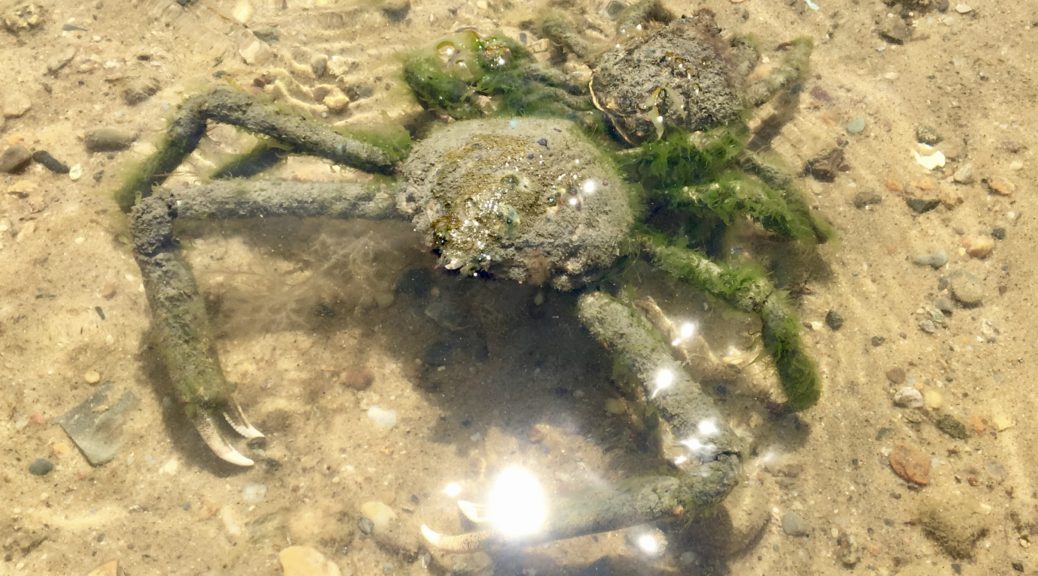Living Camouflage: Spider Crabs and Algae
/Living Camouflage: Spider Crabs and Algae
Description
The Common Spider Crab is a slow-moving, long-legged crustacean that lives mostly in shallow bays on the sandy bottom. They are among a group of several different crab species that are known as “decorator crabs,” because they cover their shells with material to disguise themselves from the eyes of predators.
Spider crabs snip off bits of algae and cover their spiny shells with it to make a form of living camouflage. This behavior is incredible because the crabs literally choose to decorate their shells, rather than algae growing on them by accident.
The camouflage works great in allowing them to blend in to their surroundings, and the algae benefits from this mutualistic symbiosis because it gets a free ride, giving it access to more floating debris for food and more space to spread its genetic material around the ocean.
What We Can Learn
This behavior within crabs teaches us that having adaptability for one’s home is important in maintaining security and sustainability. Being aware of one’s aurrounding landscape and all it can offer us for our conscious evolution makes us more resilient as a community.
Just like the image above, there are a plethora of examples of Earth-sheltered homes that people are building all around the world that work with the surrounding land by incorporating plants into the house’s structure. Not only do these structures look asthetically pleasing by merging with the landscape, they also provide practical benefits such as retaining heat and creating better warer drainage.






